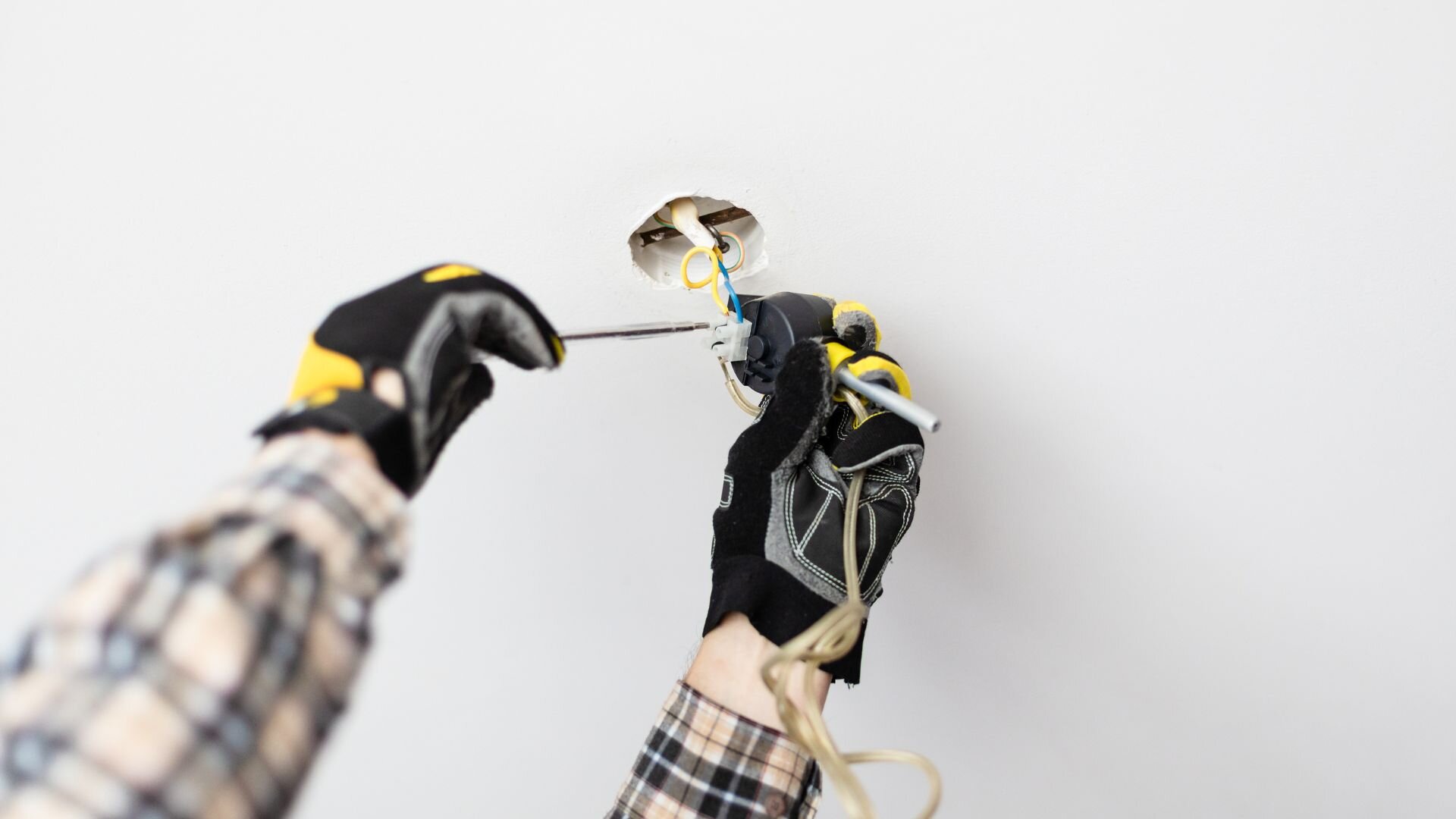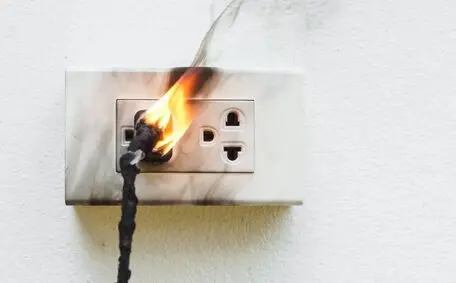![2024 03 Electrician In Roof Electrician Roof]()
An electrical defect notice is a formal document issued by a certified electrical inspector when they identify a fault, hazard, or non-compliance in your property’s electrical system. This notice is a serious matter that requires immediate attention, as it indicates the presence of electrical issues that could pose a risk to your property’s and its occupants’ safety.
Tackling electrical defects quickly is crucial to avoid potential dangers like fires, electric shocks, and other threats to safety and property. If you ignore an electrical defect notice or delay repairs, you might face significant repercussions such as fines and legal troubles. It’s also likely to complicate insurance claims if an electrical incident occurs.
This guide walks you through the crucial steps to follow when you get an electrical defect notice. Working alongside a skilled electrician, you can ensure your electrical system meets standards and regulations and is safe to use.
Understanding the Electrical Defect Notice
Receiving an electrical defect notice means you need to carefully read and understand every detail. It usually outlines the specific electrical issues—defect location, nature of the problem, and steps needed to fix it. Additionally, there’s often a deadline for addressing these issues.
Make sure to thoroughly digest the information given in the notice. This helps in prioritising repairs and communicating effectively with your electrician. If any part of the notice is unclear, don’t hesitate to reach out to the issuing authority for clarification.
![2024 03 Blackened Outlet Wall Blackened Outlet Wall]()
Understanding the possible outcomes of ignoring an electrical defect notice is crucial. If you don’t fix the listed issues within the given timeframe, you could face fines, legal hassles, or even power disconnection. Plus, ignoring electrical defects could expose your property and its occupants to dangers like fires or shocks, causing severe damage, injury, or worse. Taking these notices seriously and acting swiftly is vital to ensure safety and compliance with your property’s electrical systems.
1. Prioritising Safety
When you receive an electrical defect notice, your top priority should be ensuring your property’s and its occupants’ safety. Electrical defects can pose serious risks, and immediate action to mitigate potential hazards is essential.
The electrical defect notice may outline specific safety hazards that require urgent attention. These may include exposed live wires, overloaded circuits, faulty wiring, or outdated electrical components. Such hazards can increase the risk of electrical fires, electric shock, and other dangerous situations threatening the well-being of those residing in or visiting the property.
If the notice highlights any immediate safety concerns, it is crucial to take swift action to address them. One temporary measure that may be advised is to disconnect the power supply to the affected area until the defects can be rectified appropriately. This is particularly important if there is a risk of electric shock or fire. If you are unsure about how to disconnect the power supply safely, it is recommended to contact a licensed electrician for assistance.
Other temporary measures to mitigate risks may include avoiding using certain electrical outlets or appliances, keeping the affected area clear of flammable materials, and ensuring that smoke alarms and fire extinguishers are properly working. By implementing these precautionary steps, you can reduce the potential for harm while working on addressing the underlying electrical defects.
Remember, prioritising safety is a legal obligation and a moral responsibility to protect the well-being of those who inhabit or visit your property.
![2024 03 Fixing Wall Outlet Fixing Wall Outlet]()
2. Contacting a Licensed Electrician
Once you have assessed the situation’s urgency and taken any necessary temporary safety measures, the next crucial step is to contact a reputable and experienced licensed electrician. Choosing the right professional is essential to ensure that the electrical defects are addressed correctly and in compliance with relevant regulations.
A qualified electrician will have the expertise to accurately interpret the electrical defect notice and assess the extent of the issues. They can provide valuable insights into the work required and develop a comprehensive plan of action to rectify the defects efficiently and safely. A professional electrician will also be familiar with the latest industry standards and can ensure that all repairs and upgrades are carried out following these regulations.
When selecting an electrician, verifying their qualifications, insurance, and references is crucial. A licensed electrician should be able to provide proof of their certification and insurance coverage, which protects you in case of any accidents or damages during their work. Additionally, seeking recommendations from friends, family, or online reviews can help you find an electrician with a proven track record of quality workmanship and customer satisfaction.
It’s crucial to select an electrician familiar with handling electrical defect notices and who fully understands compliance requirements. They should communicate clearly with you, explaining what’s needed, the time it will take, and potential costs.
3. Obtaining Quotes and Approving Work
Before proceeding with any electrical work, obtain quotes from multiple electricians to compare prices, services, and timelines. Ensure that the quotes clearly outline the work to be carried out, materials to be used, and estimated completion time. Review the quotes thoroughly and ask about any additional costs or fees that may not be included in the initial quote.
Once you have selected an electrician, formally approve the work by signing a contract or work order that outlines the agreed-upon scope of work, timeline, and costs. Read the contract carefully and clarify any questions or concerns before signing.
Discuss any specific requirements or preferences you may have with your chosen electrician before the work commences. Maintain clear communication and provide the necessary approvals to ensure a smooth and efficient process for addressing the electrical defects in your property.
![2024 03 Gloves Cables Wall Gloves Cables Wall]()
4. Scheduling the Work
Once you have approved the work and chosen an electrician, scheduling the repairs as soon as possible is crucial. Delaying the necessary maintenance can further deteriorate the electrical system, increasing the risk of electrical fires, electric shock, and other hazards. Prioritise the repairs and work with your electrician to find the earliest available time slot that suits your schedule.
When scheduling the work, consider the convenience of the timing for both you and the electrician. Discuss the estimated duration of the repairs and choose a time that minimises disruptions to your daily routine. If the work requires power to be disconnected, plan accordingly and inform any affected parties in advance.
Before the electrician arrives, you may need to do some preparation work. This may include clearing the area around the electrical panel, ensuring easy access to the affected areas, and removing any obstacles that may hinder the electrician’s work. By taking care of these preparations beforehand, you can help the electrician work more efficiently and complete the repairs promptly.
5. Obtaining a Certificate of Compliance
Upon completion of the electrical repairs, your electrician should provide you with a Certificate of Compliance (COC) or Certificate of Electrical Safety (CES), depending on your state or territory. These certificates are legal documents confirming the electrical work has been carried out per the relevant Australian Standards, such as AS/NZS 3000 (the Wiring Rules) and any other applicable state or territory regulations. The certificate proves that the electrical defects have been rectified and that your property’s electrical system is compliant.
The COC or CES typically includes essential information such as the electrician’s license number, the work’s completion date, a description of the repairs or upgrades performed, and a statement declaring that the work complies with the applicable electrical codes and regulations. The electrician will sign and date the certificate, taking responsibility for the quality and compliance of the work.
Keeping the COC or CES on file for future reference is important. Insurance firms, property managers, or prospective buyers may need it when you sell your property. It’s a record of the electrical work done and shows you’ve addressed defects to keep your property safe.
In addition to keeping a copy of the certificate for your records, you may need to provide a copy to the electrical inspector or the relevant authority in your state or territory who issued the original defect notice. This proves that you have complied with the requirements outlined in the notice and have taken the appropriate actions to rectify the electrical defects.
6. Following Up with the Electrical Inspector
After completing the electrical work and obtaining your electrician’s Certificate of Compliance or Electrical Safety, follow up with the electrical inspector who issued the electrical defect notice. Provide evidence of compliance, such as a copy of the certificate and other relevant documentation, including improvements like addressing low-hanging overhead cables or repairs to private power poles.
The inspector will assess the provided evidence to ensure all electrical connections and the overall electrical installation meet current safety standards and regulations. If the inspector is satisfied that the issues have been resolved and the electricity network is compliant, they will issue a notice of compliance. This confirms your property’s electrical system is safe and that you have fulfilled the requirements of the defect notice.
Keep the compliance notice with your Certificate of Compliance or Electrical Safety for future reference. If needed, share these documents with your insurance provider to demonstrate compliance with safety standards and ensure the security of your property’s electrical system.
![2024 03 Holding Piping Toolbelt Holding Piping Toolbelt]()
Don’t Let Electrical Defects Put Your Property at Risk
Receiving an electrical defect notice can be a daunting experience. Still, by taking prompt action and following the necessary steps, you can ensure the safety and compliance of your property’s electrical system. Remember to prioritise safety, thoroughly read and understand the notice, and take immediate action to mitigate any potential risks.
Working with a trusted and experienced licensed electrician is crucial when addressing electrical defects. A professional electrician can help you interpret the notice, develop a plan of action, and carry out the necessary repairs according to the relevant Australian Standards and regulations.
At Bright Force Electrical, we understand the importance of prompt and reliable electrical services when dealing with electrical defect notices. Our highly skilled and licensed electrician team is dedicated to providing top-quality workmanship and exceptional customer service. We have the expertise and experience to handle all electrical defects, ensuring your property’s electrical system is safe, compliant, and up to code.
When you choose Bright Force Electrical, you can have peace of mind knowing that your electrical needs are in capable hands. We are committed to delivering affordable solutions without compromising quality and work closely with our clients to ensure their complete satisfaction. Trust us to help you navigate the process of addressing electrical defects, from interpreting the notice to obtaining the necessary compliance certificates.
Contact Bright Force Electrical today to schedule your electrical inspection and repairs. Our friendly and knowledgeable team is here to assist you every step of the way and ensure that your property’s electrical system is safe, reliable, and compliant.













